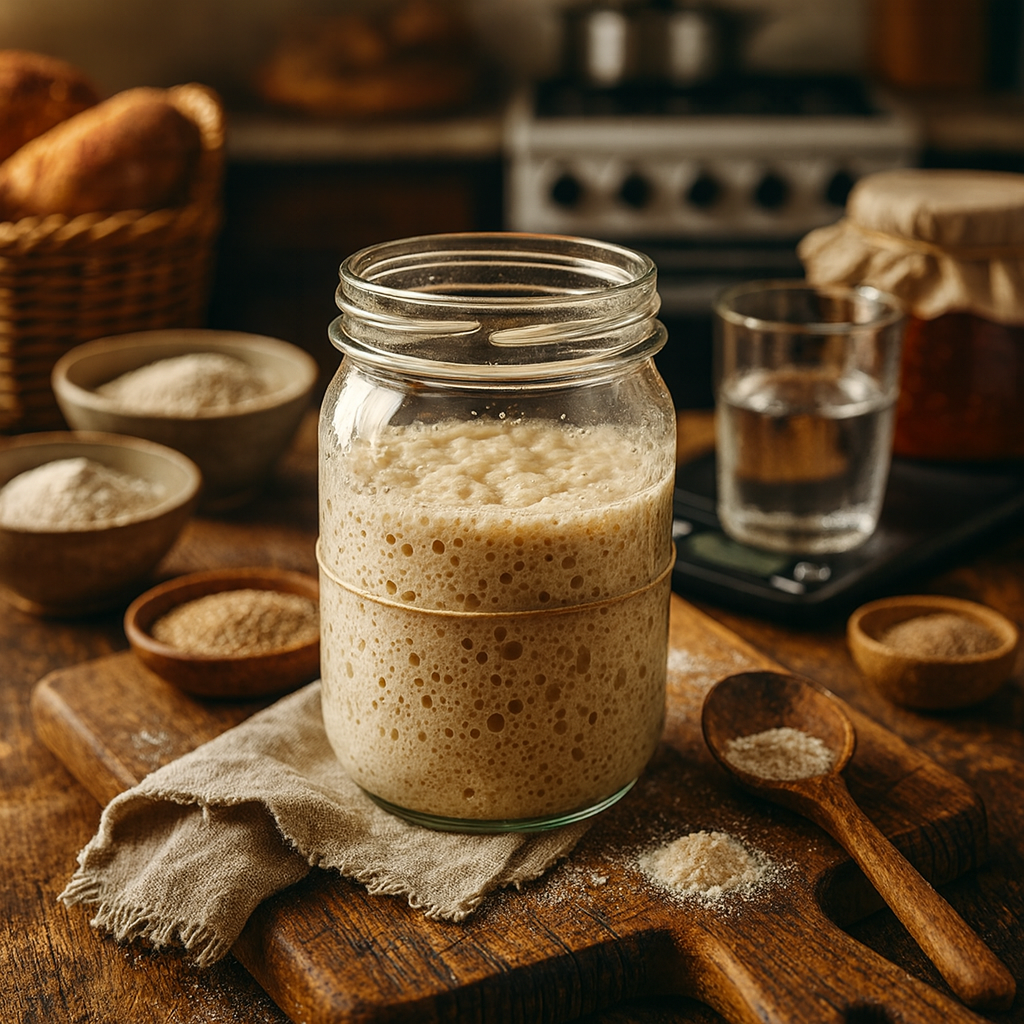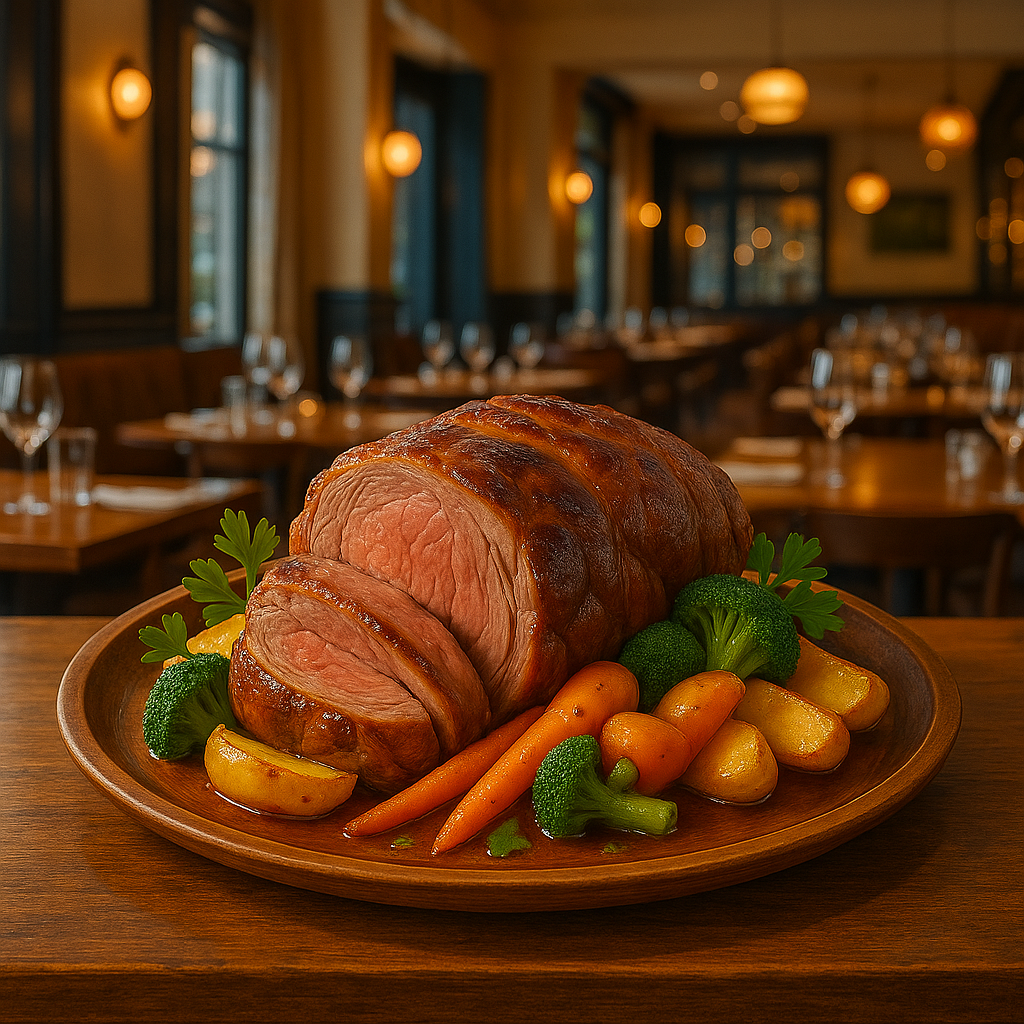Table of Contents

Introduction to Kiwi Cuisine
New Zealand, often referred to as Aotearoa, boasts a vibrant and diverse food culture that is a true reflection of its unique geography, variable climate, and rich history. The culinary landscape of the country is primarily shaped by the indigenous Maori culture intertwined with influences from European settlers, creating a remarkable fusion that characterizes Kiwi cuisine. The stunning natural surroundings—from the lush landscapes to the pristine coastlines—play a crucial role in determining the variety of local ingredients available, which directly enriches traditional and contemporary dishes.
One of the most notable aspects of Kiwi cuisine is its emphasis on fresh, locally sourced produce. New Zealand’s agricultural practices have led to the cultivation of a broad spectrum of fruits, vegetables, and meats, including free-range lamb, beef, and seafood. This insistence on quality local ingredients not only supports the economy but also enhances the flavor profile of numerous dishes that New Zealanders hold dear. Dishes such as hangi, prepared in an earth oven, showcase the cultural significance of local ingredients while creating a distinct and memorable culinary experience.
The climate of New Zealand, spanning from subtropical in the north to temperate in the south, allows for a diverse range of agricultural products, fostering a food culture that celebrates seasonality. Chefs and home cooks alike take pride in utilizing what is in season, resulting in menus that evolve throughout the year. Furthermore, contemporary Kiwi cuisine has been profoundly influenced by global trends, leading to innovative adaptations of classic dishes that reflect both multicultural elements and the robust local culinary heritage.
As one delves deeper into the realm of Kiwi cuisine, it becomes evident that every dish tells a story—a narrative crafted from the land, its people, and their shared experiences. Whether indulging in traditional favorites or discovering modern interpretations, the exploration of New Zealand’s gastronomic offerings is a journey worth undertaking.
The Allure of Pavlova: A National Treasure
Pavlova is widely regarded as a quintessential dessert in New Zealand, representing more than just a sweet treat; it embodies the country’s culinary identity. This delightful meringue-based dessert, characterized by its crisp exterior and soft, marshmallow-like interior, is often adorned with an assortment of toppings. The iconic appeal of pavlova lies not only in its taste but also in its aesthetic presentation, typically featuring a crown of whipped cream and an array of fresh fruits such as kiwi, strawberries, and passionfruit.

The origins of pavlova have been a subject of debate between New Zealand and Australia, with both nations claiming to have created this beloved dish. This ongoing rivalry contributes to the allure of pavlova, making it a symbol of national pride. Historical accounts suggest that pavlova was named after the Russian ballerina Anna Pavlova, who toured Australia and New Zealand in the 1920s, lending a cultural significance to the dessert. Despite its controversial beginnings, pavlova has firmly established itself as a staple dessert for celebrations and gatherings in New Zealand.
In terms of variations, there are several interpretations of this classic dessert. While the traditional version showcases a harmonious blend of meringue, cream, and fruit, some contemporary takes incorporate unique flavors, such as chocolate or spices, while maintaining the essential structure. For those looking to make the perfect pavlova at home, several tips can prove invaluable: ensure your mixing bowl is free of grease, achieve the right consistency of meringue by beating the egg whites to stiff peaks, and allow adequate time for the meringue to bake and cool before decorating. This dessert is not just a dish; it’s a celebration of New Zealand’s cultural heritage and culinary artistry.
Savory Pies: A Portable Kiwi Classic
In New Zealand, savory pies hold a special place in the culinary landscape, representing not just a meal but also a cultural icon that resonates deeply with locals and visitors alike. These portable delights are a quintessential part of Kiwi cuisine and are often enjoyed as a quick snack or a hearty meal on the go. The beauty of New Zealand pies lies in their remarkable versatility, with a wide array of fillings that cater to diverse tastes. Traditional choices include rich lamb and mint, which offers a robust flavor profile that many Kiwi diners favor, while chicken and mushroom pies provide a comforting and creamy experience.
For those seeking vegetarian options, New Zealand’s pie culture does not disappoint. Many bakeries have embraced plant-based fillings, incorporating seasonal vegetables, creamy sauces, and flavorful herbs to create pies that are as satisfying and delicious as their meat counterparts. This variety ensures that there is always something to appease every palate.
Apart from the classic offerings, the concept of ‘piano pies’ has gained popularity, referring to a unique pie style that often leverages innovative combinations and partnerships, such as combining savory and sweet in a single pastry. These culinary creations emphasize artisan craftsmanship, where local ingredients shine and the focus remains on quality and flavor. Numerous establishments across New Zealand have garnered a reputation for their exquisite pies, often drawing travelers who seek out these culinary treasures during their journeys. Examples include Bakeries in the Canterbury region and the renowned establishments found in small towns, which have perfected the art of pie-making.
With their rich heritage, diverse fillings, and exceptional flavor, savory pies are undoubtedly a must-try on any food lover’s exploration of New Zealand’s gastronomic landscape.
Pinot Noir: The Jewel of Kiwi Wines
New Zealand is rapidly becoming a significant player on the global wine stage, earning acclaim particularly for its exceptional Pinot Noir. This varietal thrives in the diverse microclimates of the country, producing wines that are celebrated for their complexity and refinement. The regions most renowned for growing Pinot Noir include Central Otago and Marlborough, both of which showcase unique terroirs contributing to the distinctive characteristics of Kiwi Pinot Noir.

Central Otago is celebrated for its dramatic landscapes and climate, marked by sunshine and cool nights, which allow grapes to develop a deep fruit profile while retaining acidity. Here, Pinot Noir often exhibits flavors of cherry, plum, and earthy undertones, with a velvety mouthfeel that captivates wine enthusiasts. Similarly, Marlborough, primarily known for its Sauvignon Blanc, also produces outstanding Pinot Noir. The region’s cooler temperatures foster a longer growing season, contributing to the subtlety and balance found in its Pinot Noir, often presenting notes of raspberry, spice, and floral aromatics.
The food pairing potential of New Zealand Pinot Noir is remarkable. With its medium body and vibrant acidity, this wine pairs well with a variety of dishes, such as roast lamb, duck or even mushroom risotto. The harmonious interaction of flavors enhances both the food and the wine, making for an enjoyable dining experience. Wine tasting in New Zealand offers an immersive journey, as many wineries provide scenic locations, inviting visitors to savor the wines alongside stunning landscapes.
Understanding the nuances of New Zealand’s Pinot Noir is essential for any wine lover. The combination of climate, soil, and innovative winemaking approaches results in a product that not only reflects the region’s identity but also embodies the passion and dedication of its vintners.
Sustainable Eating: The Kiwi Approach
In recent years, New Zealand has emerged as a prominent advocate for sustainable and ethical eating practices. The growing trend towards sustainability in the culinary scene is fueled by an increasing awareness of the environmental impact associated with food production. This movement is primarily embodied in the farm-to-table concept, which emphasizes the importance of sourcing ingredients locally, thereby reducing carbon footprints and supporting local economies.
Farm-to-table restaurants and eateries across New Zealand are cultivating partnerships with local farmers, fishermen, and producers. This not only ensures a supply of fresh, seasonal produce but also encourages transparency in the food supply chain. Consumers are becoming more discerning about the origins of their food, and local establishments are responding by showcasing ingredients that reflect regional flavors and seasonal abundance.
Innovative chefs play a crucial role in this sustainable movement by creatively incorporating locally sourced ingredients into their menus. Establishments such as the celebrated restaurant, Attica, are recognized for their commitment to sustainability, whereby they prioritize organic, free-range, and ethically sourced products. These culinary leaders inspire others by illustrating how sustainability can coexist with high culinary standards, thereby enriching the overall food landscape.
Additionally, numerous farmers’ markets and community-supported agriculture (CSA) initiatives have gained traction, allowing consumers direct access to local produce while fostering a sense of community. By participating in these movements, consumers not only enjoy fresher alternatives but also contribute to the economic well-being of local farmers and artisans.
As New Zealand continues to embrace sustainable eating, this approach enhances both the quality of food and the dining experience. By prioritizing fresh, local ingredients and ethical practices, the Kiwi culinary scene is not only evolving but is also paving the way for a more sustainable and responsible food culture.
Street Food Scene: A Taste of Modern Kiwi Flavors
New Zealand’s street food scene offers a captivating glimpse into the vibrant culinary culture of the country. Renowned for its originality and creativity, this dynamic food environment showcases a fusion of international influences alongside traditional Kiwi flavors. Street food markets and festivals have become a focal point for gastronomes, where locals and tourists alike come together to savor an array of innovative dishes.
One of the most significant features of the Kiwi street food scene is its representation of seasonal and locally sourced ingredients. Popular food markets such as the Vodafone Auckland Food Truck Collective and Wellington’s Night Market host numerous vendors offering a variety of options, from gourmet burgers to artisanal ice creams and vegan delicacies. These markets foster a sense of community and encourage culinary experimentation, enabling chefs to showcase their skills while embracing New Zealand’s produce. These gatherings not only stimulate the economy but also promote sustainability within the food industry.
Among the standout dishes, the iconic Kiwi pie continues to captivate food enthusiasts. Variations abound, with fillings ranging from traditional minced meat to innovative combinations such as smoked salmon and capers. Similarly, the emergence of gourmet food trucks has taken street food to another level, with offerings that reflect the modern palate’s evolving preferences. For instance, influences from Asian and Middle Eastern cuisine have led to dishes like bao buns and falafel wraps being incorporated into the local street food spectrum, creating a unique blend of flavors that resonate with both locals and visitors.
Additionally, food festivals such as the Auckland Food Show and the Wellington Food Festival further enhance this culinary landscape, allowing chefs to experiment and share their culinary artistry. These gatherings celebrate the diverse flavors that characterize Kiwi cuisine and highlight the inventive spirit of New Zealand’s gastronomic community. In capturing the heart of Kiwi culture, the street food scene serves as a testament to the rich tapestry of flavors and creativity that continues to evolve in this beautiful country.
Exploring Regional Dishes: A Culinary Road Trip
New Zealand’s diverse geography and cultures contribute to a rich tapestry of regional dishes that reflect the nation’s culinary heritage. Each area offers distinct flavors and traditional recipes that invite exploration and appreciation. As you embark on this culinary road trip across the country, you will encounter local specialties that capture the essence of each region.
Starting in the northern part of the North Island, the Bay of Plenty is renowned for its hangi, a traditional Māori feast where meats, vegetables, and root crops are slow-cooked underground using heated stones. This communal style of cooking not only provides a unique flavor but also connects diners to the region’s cultural heritage. Nearby, in Auckland, savor fresh seafood such as the iconic green-lipped mussels, which highlight the region’s access to abundant coastal treasures.
As you journey southward to Wellington, the capital city, indulge in a comforting bowl of seafood chowder. This dish prominently features the region’s fresh fish and shellfish, blended with creamy potatoes and herbs to create a hearty meal perfect for the city’s cooler climate. Additionally, Wellington’s craft coffee scene is noteworthy, making it an ideal stop for food and beverage enthusiasts.
Traveling further south to the South Island, one cannot overlook the famed lamb dishes produced in Canterbury, where fertile pastures provide an excellent environment for raising sheep. Enjoy lamb shanks cooked with local herbs and paired with seasonal vegetables. Finally, conclude your culinary exploration in Otago, where you can savor rich wines and hearty venison dishes, a testament to the region’s thriving vineyards and game hunting traditions.
Each bite of these regional dishes tells a story of New Zealand’s cultural identity, inviting you to experience the unique flavors and traditions that define its culinary landscape. This gastronomic road trip promises not only delightful meals but also a deeper appreciation of New Zealand’s regional diversity.
Sweet Treats Beyond Pavlova: Kiwi Desserts to Try
While pavlova stands as a cornerstone of New Zealand’s dessert scene, the country’s culinary landscape also boasts a variety of other delectable sweets that are worthy of attention. Among them, the caramel slice holds a special place. This rich and indulgent treat features a base of crumbly biscuits topped with a thick caramel layer and a glossy chocolate coating. For those wishing to try their hand at making this delight, a simple recipe involves combining crushed biscuits, sweetened condensed milk, and chocolate, all baked to perfection. Alternatively, visitors can find the best caramel slice at popular cafes such as the renowned Fat Pigeon in Christchurch.
Another iconic Kiwi dessert is the ANZAC biscuit, which has historical roots dating back to World War I. With a combination of rolled oats, flour, sugar, coconut, and golden syrup, these biscuits are not only easy to make but also carry a sense of nostalgia for many New Zealanders. They are typically crunchy on the outside, with a chewy center, making them perfect for a snack. For those interested in sampling authentic ANZAC biscuits, local bakeries and markets frequently offer freshly baked versions throughout New Zealand, particularly during ANZAC Day commemorations.

Feijoa crumble is a seasonal favorite that should not be overlooked. Utilizing the unique feijoa fruit, which is particular to the region, this dessert is often prepared with a buttery crumble topping that enhances the tart sweetness of the fruit. Many home cooks will use a combination of flour, brown sugar, and butter to create the crumble, emphasizing the importance of fresh, ripe feijoas for the filling. For an outstanding culinary experience, visitors to Hawke’s Bay can find exceptional feijoa crumble served at delightful cafes that celebrate local produce.
Conclusion: Crafting Your Kiwi Foodie Adventure
Exploring New Zealand’s culinary landscape provides an unparalleled opportunity to truly experience the culture and spirit of this beautiful country. From its stunning landscapes to its rich history, the food of New Zealand is a reflection of the diverse influences and traditions that have shaped it. Whether you are indulging in a classic pavlova, savoring a slice of meat pie, or pairing your meal with an exquisite New Zealand Pinot Noir, each bite weaves a narrative of the Kiwi experience.
Travelers keen on discovering the local cuisine should consider embracing both traditional and contemporary dishes. Local markets, pop-up food stalls, and upscale restaurants alike offer a plethora of options that showcase New Zealand’s commitment to fresh, seasonal, and high-quality ingredients. To maximize your culinary exploration, engage with locals to seek recommendations on hidden gems and must-try eateries. Food tours can also provide insights into the history and significance of various dishes, allowing for a more enriching experience.
Don’t hesitate to experiment with local flavors and ingredient combinations—New Zealand’s cuisine is celebrated for its creativity and fusion of styles. Consider participating in cooking classes or workshops, which not only enhance your culinary skills but also deepen your appreciation for Kiwi ingredients. Moreover, savoring wine tastings in renowned regions like Marlborough can further complement your culinary journey, showcasing the unique characteristics of New Zealand wines.
Ultimately, whether you are a seasoned foodie or a curious traveler, immersing yourself in New Zealand’s food scene is an essential part of crafting your Kiwi foodie adventure. By embracing the diverse flavors and stories that accompany each dish, you ensure that your journey will be as enriching as it is delicious.






Super-Duper site! I am loving it!! Will come back again. I am taking your feeds also
Hello.This post was extremely fascinating, particularly because I was looking for thoughts on this subject last week.